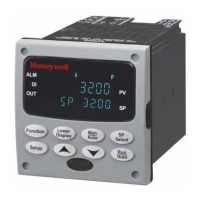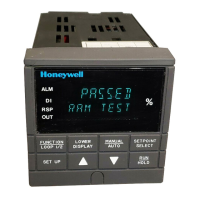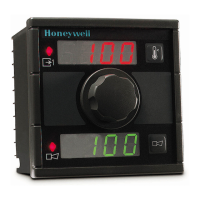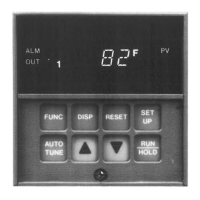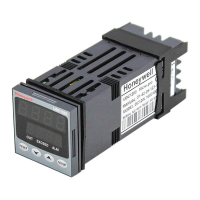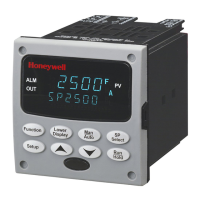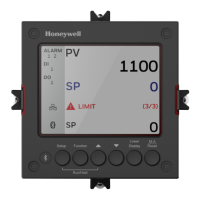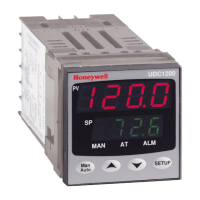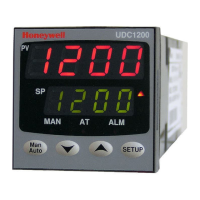Monitoring and Operating the Controller
Operation
The Accutune III algorithm provides user-friendly, on-demand tuning in this controller.
No knowledge of the process is required at start-up. The operator simply initiates the
tuning while in the automatic mode.
Once Accutune III has been enabled in the TUNE setup group, either “SLOW” or
“FAST” tuning may be used. Which one is used is selected via the lower display during
normal operation.
For the SLOW selection, the controller calculates conservative tuning constants with the
objective of minimizing overshoot. If the controller determines that the process has
appreciable dead time, it will automatically default to use Dahlin Tuning, which produces
very conservative tuning constants. The SLOW selection may be useful for TPSC and
Position Proportional applications, as it reduces “hunt” problems for the motor. This
selection is also recommended for applications that have significant deadtimes.
For the FAST selection, the controller calculates aggressive tuning constants with the
objective of producing quarter damped response. Depending upon the process, this
selection will usually result in some overshoot. For this reason, it may be desireable to
enable the FUZZY tune selection. See Section 4.11. When Fuzzy tune is enabled, it will
work to suppress or eliminate any overshoot that may occur as a result of the calculated
tuning parameters as the PV approaches the setpoint. This selection is best suited for
processes with a single lag or for those that do not have any appreciable deadtime.
FUZZY tuning does not work well for processes that have appreciable deadtime.
The Accutune III tuning process will cycle the controller’s output two full cycles
between the low and high output limits while allowing only a very small Process
Variable change above and below the SP during each cycle. A “T” shows in the upper
display until tuning is completed.
At the end of the tuning process, the controller immediately calculates the tuning
constants and enters them into the Tuning group, and begins PID control with the correct
tuning parameters. This works with any process, including integrating type processes,
and allows retuning at a fixed setpoint.
4.10.1 Tune for Simplex Outputs
After “TUNE” has been enabled, you can start Accutune as shown in Table 4-10.
Table 4-10 Procedure for Starting “TUNE”
Step Operation Press Result
1
Configure LSP1
Lower
Display
Lower
Display
Lower
Display
Until SP (Local Setpoint 1) shows
in the lower display.
2
or
Until LSP1 is to the desired value.
3
Switch to
“Automatic” Mode
Man
Auto
Man
Auto
Man
Auto
Until the “A” indicator is lighted (on
controllers with Manual option).
110 UDC3200 Universal Digital Controller Product Manual 12/04
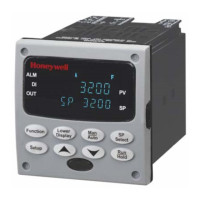
